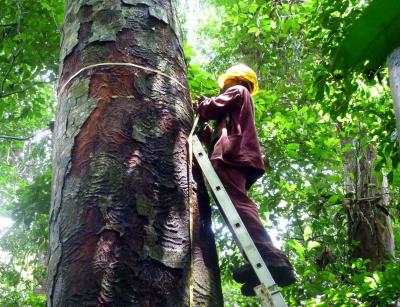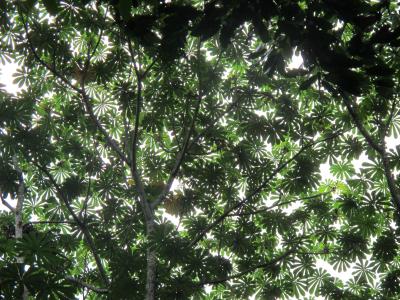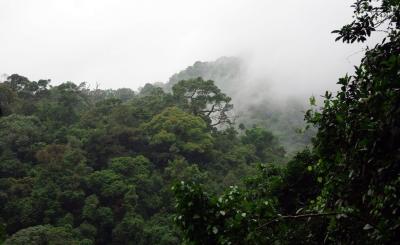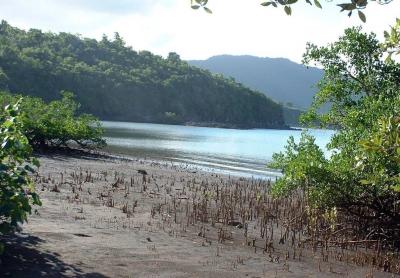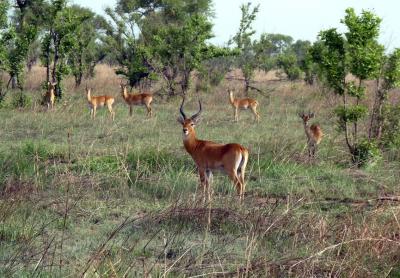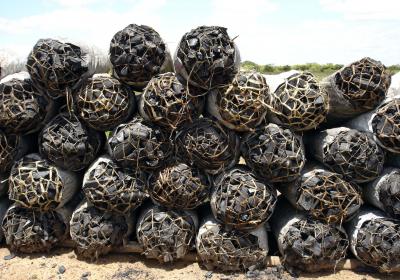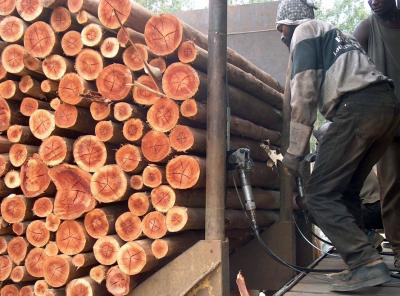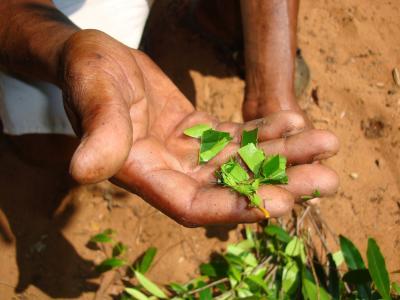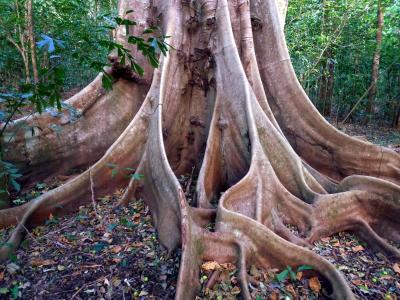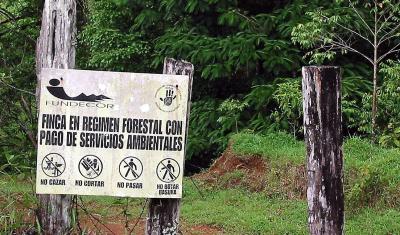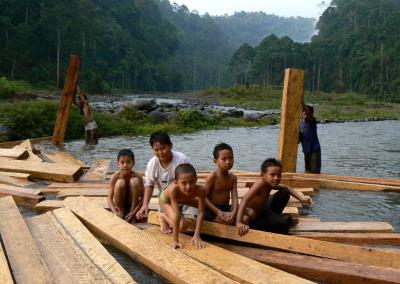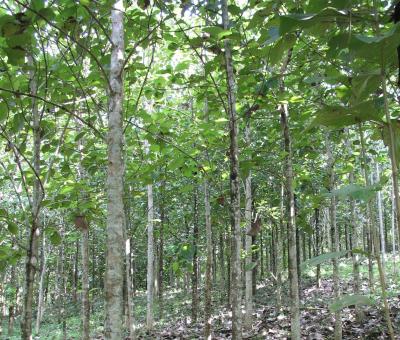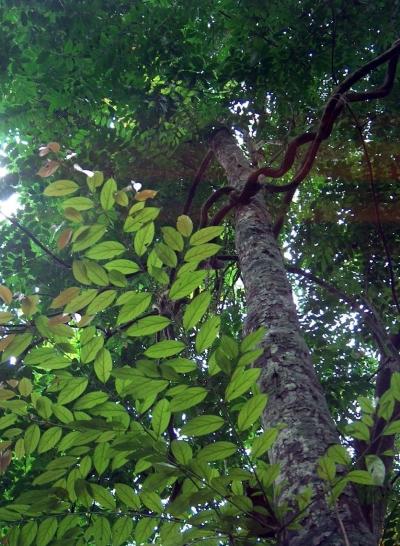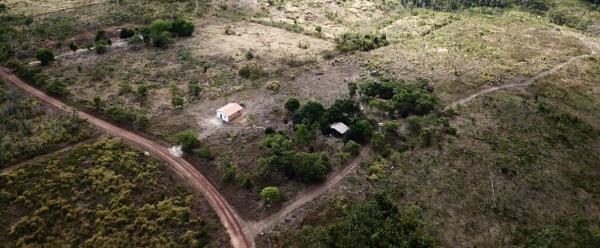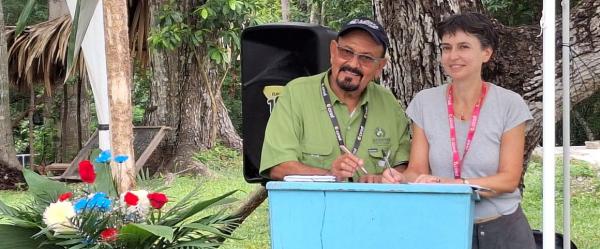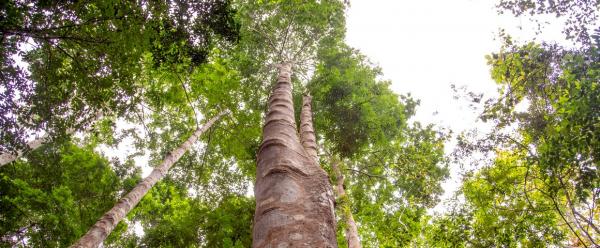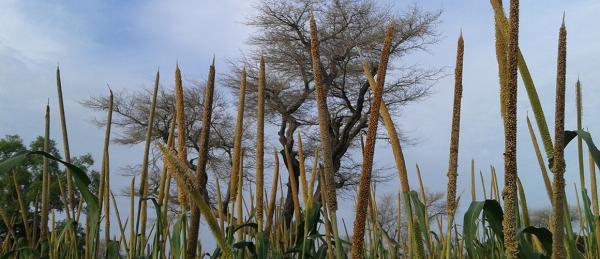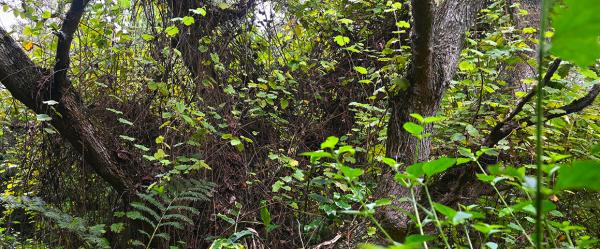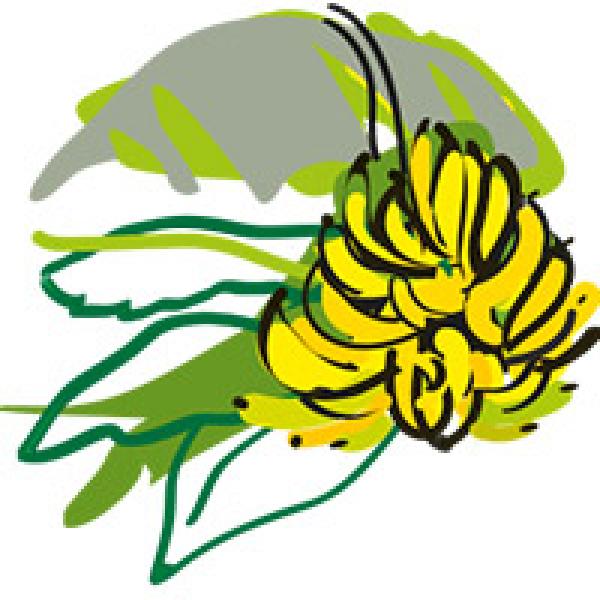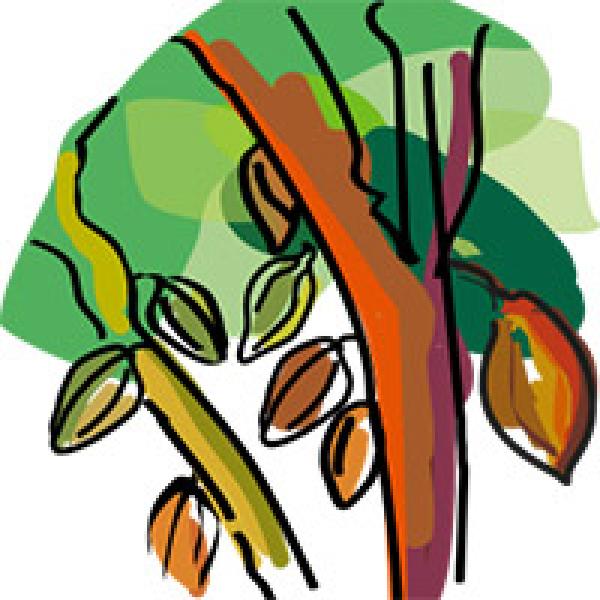Call to action 13 November 2025
- Home
- Our activities, our impact
- Tropical value chains
- Forest resources

Forest resources
The term tropical forest is used for the wooded areas situated between the Tropics of Cancer and Capricorn. Tropical forests cover around 35% of the land area between the two tropics and account for nearly half of the world’s forests. The principal forests are found in the Amazon, the Congo Basin and south-east Asia.
How many trees make a forest?
What exactly is a forest? How many trees are required, what surface area should it cover and what tree density is needed to make a forest? The questions are less trivial than they appear. Defining the term ‘forest’ is complex and subject to controversy. For the United Nations’ Food and Agriculture Organization (FAO), a forest has a surface area greater than half a hectare, with trees measuring more than 5m in height and tree crown cover (canopy cover) of more than 10%. However, other institutions use different criteria, notably in terms of the rate of crown cover and the height of the trees.
How much of the planet is covered by forest?
The definition of a forest also takes into account the use of the ground amongst the trees. Urban wooded areas, orchards and agroforests are excluded in the definition used by the FAO. There is a lively debate on whether palm oil plantations should or should not be included. The definition also varies from one continent to another. A prime example is that of the Russian taiga , which is made up of dwarf conifers; whether the taiga qualifies as a forest or not changes the planet’s total forested area by some 20%.
Primary forests, secondary forests, plantations…
In theory, a primary forest is the result of a natural dynamic over the centuries, a process in which humans do not play a part. In reality, archeological evidence points to the fact that the presence of humans goes way back, including in the huge forests of the Amazon and Congo Basins. These forest dwellers could use the wood or practice shifting agriculture by clearing the forest. Once these plots are abandoned, the natural forestry dynamic is re-established. These new forests are made up of pioneering fast-growing species and are known as secondary forests. After several centuries, the composition of its flora and its structure start to again resemble the primary forest. To increase the speed at which the forest is re-established, to increase productivity or recreate a forest environment, humans plant trees. These forest plantations usually contain a reduced range of species, often bred, which are easier to manage and more productive.
The many faces of tropical forests
When we think about tropical forests the image that often springs to mind is the jungle full of lush vegetation. But beyond the cliché, tropical forests hold many surprises, the greatest of them being their extreme diversity. The term ‘tropical forests’ designates all wooded areas situated between the Tropics of Cancer and Capricorn.
Dense rainforest. Here the trees are huge and prevent light reaching the ground. In the undergrowth, young trees and bushes are rare. As soon as one of these giants of the forests dies and topples, it takes other trees with it. This leaves a ‘hole’ in which a fierce battle for the light will begin.
Rainforests cover almost 1,100 million hectares and can be found in a belt, measuring between 800 and 4,000km, around the equator.
Dense or sparse, dry forests. There are two types of dry forest: the rare dense forests and the more common sparse forests. Trees are small, rarely measuring more than 20m tall, and have short, sturdy trunks. The undergrowth plays host to numerous shrubs. They are often threatened by forest fires. These forests are found in areas with a clearly defined dry season. They are found in the Sudan, Guinea and Zambia region in Africa, on the west coast of Madagascar, in India, on the Indochinese peninsula and in the American tropics.
Trees which flourish in water. Mangrove swamps are forests which grow in the tidal zone between the saltwater of the sea and the freshwater of rivers. Its trees, including the famous mangroves, have developed various strategies to gain a foothold in the water: long roots which reach down from the branches and anchor themselves in the silt, germination of fruit on the trees with a root shaped like a knife blade and floating fruit. In terms of biomass, mangroves are one of the most productive ecosystems on our planet.
High altitude forests, very rare. Mountain forests are shrouded in cloud and the tree trunks are covered with epiphytes (air plants) such as lichens, moss and bromeliads (flowering plants). The size of the trees and their leaves gradually reduces and the trunks become increasingly convoluted. As the altitude increases, we find evergreen trees such as conifers before the forest disappears and herbaceous and bushy plants take their place.
Wooded savanna. Savannas are not forests since they are made up principally of grassland. However, they do play host to trees and bushes.
We talk therefore of wooded savanna or shrubland, and it can often be difficult to distinguish these from some sparse forests such as the Brazilian cerradão, for example.
Forests: a thousand resources
The oldest human use for tropical forests is hunting and gathering. Long after this, they became a source of agricultural land for slash-and-burn farming. The practice of grazing and rearing livestock also developed in dry forests and wooded savanna. Tropical forests still supply populations with game, fruit, resins, fibres, fodder, medicines, colourants and, of course, wood.
La forêt tropicale fournit encore aux populations du gibier, des fruits, des résines, des fibres, du fourrage, des médicaments, des colorants… et bien évidemment du bois.
Wood energy. In large tropical African cities such as Kinshasa, Niamey and Ouagadougou, wood is primarily an energy source, used for cooking. It comes mainly from traditional village plantations.
Today, large steel manufacturers are using charcoal instead of coal and investing in eucalyptus plantations, notably in Brazil.
Timber. Timber also comes principally from natural forests, but it can also derive from planted species such as tropical pine, teak, eucalyptus and mahogany. Many types of tropical wood have a high value for their use in constructing wood frames, for furniture and for parquet flooring and are traded globally.
Paper pulp. Planted forests are the major source for paper pulp because industrial manufacturers need a graded and homogenous product. Some 30% of the world’s paper pulp comes from eucalyptus plantations.
The annual consumption of paper and cardboard is approximately 60kg per person (and 170kg in France). Consumption is increasing by approximately 3% a year. It is impossible to meet this demand using only natural forests.
Fruit, leaves and branches. All parts of the tree are useful. Thin branches are used in wickerwork. The leaves are eaten as vegetables or used in sauces such as baobab leaves, for example, which are rich in calcium. When grass is sparse at the end of the dry season, the leaves and pods from numerous trees, such as those of faidherbia, supplement the diet of cattle. Bark is used to make ropes and materials, and is often a component of medicines. Sap is also useful. boswellia sap, for example, provides incense, some acacias produce gum arabic and hevea produces latex which can be transformed into rubber. vitellaria fruits provide shea butter, well known for its nutritional and cosmetic uses. cola nuts have tonic effects. It’s a long list…
Forests which heal. Between 40% and 70% of current medicines are either created from or synthesised from natural substances, lots of which come from tropical forests. Tropical forests are still of keen interest for pharmaceutical researchers. In the Amazon, andiroba seeds (Carapa guianensis) contain an oil with anti-mosquito and healing qualities. The trunk of the copaiba (Copaifera reticulata) provides an oleoresin with powerful healing qualities, including antiseptic and anti-inflammatory properties.
Invaluable forest services
Forests not only provide wood, fruit, bushmeat and medicines. They also provide other less visible benefits which contribute to the general well being of human beings: these are environmental services.
A range of services, locally… The roots of certain trees live in symbiosis with bacteria which improve the fertility of the soil. They encourage the infiltration of rainwater which therefore refills groundwater supplies and limits erosion and landslides. By breaking the waves, mangrove swamps and coastal tropical forests protect local populations during storms. By maintaining humidity, forests regulate the local climate. For example, if the Amazon forest disappeared, the South American continent would undergo major changes, including long periods of drought. These services are not yet well known and others may be discovered in the future. Forests also play an important role in creating attractive landscapes and in maintaining animal and plant biodiversity.
…and globally. Thanks to photosynthesis, the leaves on trees release oxygen, which is indispensable for all life on earth. But, above all, they capture and store atmospheric carbon in different parts of the tree. To produce 1m³ of wood, a tree transforms one tonne of carbon dioxide and therefore helps mitigate climate change. This stocking of carbon is recognised as an environmental service.
Payments for environmental services. Payments for environmental services are nothing new, but their globalisation certainly is. The principal is as follows: the beneficiaries of environmental services pay the owners or local users if they adopt practices which maintain or restore the ecosystem. For example, a community finances upstream afforestation to avoid downstream erosion. The contract is either for a surface area, which could be a protected area, or a product, where the consumer pays a ‘green’ premium for an item produced according to environmental standards. Or it could involve restrictions on what the forest is used for; an example here is the ban on hunting great apes. While the principal of paying for these services is simple, their implementation is much more complex. Take the case of gorillas, for example. How much should we pay for their protection and for their environment? The value of a kilo of meat on the market? The value of the trees that could have been felled and sold? The value of the tourist visits that could be arranged? Or, in fact, the total of all these elements? And who should pay? Companies, consumers or the whole society?
Wood, a renewable eco-material
Why should we consider wood as a building material? Wood consumes little ‘grey’ energy, by which we mean the energy used in its production, manufacture, use and, finally, recycling it at the end of its life. It uses four times less energy than concrete, 200 times less than aluminium, and up to 4,000 times less than carbon fibre. Furthermore, products for treating wood, glues and wood finishes are becoming increasingly environmentally friendly. During their growth, trees also accumulate carbon from the atmosphere in the wood. When the wood is transformed into usable material, it stores the atmospheric carbon it has trapped for many years. When it is burned, it releases this same carbon into the atmosphere.
The importance of knowing more about tropical wood. It is of crucial importance to have a good understanding of tropical tree species and their properties in order to produce wood products that perform well and are fit for purpose. Tropical woods often possess a natural durability. Studying them allows us to identify those chemical components which are at the heart of this incredible resistance to attack. Furthermore, all the people who utilise natural forests for their wood have an interest in the possible diversification in sales that the introduction of little used species offers. On the one hand, this can help optimise their production by allowing them to benefit from the best of the species which have until now been overlooked, such as monghinza, niové and okan. On the other hand, it limits the pressure on the flagship species such as sapelli, ayous and iroko.
Teak wood contains phenolic compounds which makes it extremely resistant to fungi and termites. For this reason, and for the fact it is so aesthetically pleasing, worldwide demand for teak continues to grow. Originating in the Indo-Burma region, it has been overexploited in its natural environment. It comes today from 3 to 4 million hectares of plantations located in all the tropical zones, but mainly in Asia.
The selected varieties can be cut after 15 to 20 years in good growing conditions, but from 10 years on it is possible to use wood that has been thinned out. Certified teak guarantees that the tree has come from a forest that has been sustainably managed.
Azobe is a very heavy wood which does not float. It is used in aquatic engineering works and for cross-members, thanks to its great resistance, in particular to the taret (teredo), the bivalve molluscs which attack immersed wood. (West and Central Africa)
Ebony, ranging in colour from uniform black to dark brown, is often used for veneer, particularly for top-quality musical instruments. In French a cabinetmaker is known as an ‘ébéniste’, from ‘ébene’ the French name for ebony. (All tropical zones)
Amaranth is a luxurious wood with a purplish colour and is much sought after by cabinetmakers. (Tropical South America)
Cedro releases a strong and agreeable odour. It is the wood of choice for cigar boxes. (Central and South America, Caribbean)
Amourette is a purplish brown-red with numerous dark marks. It is used for making musical bows. (Latin America)
Tali is a heavy, strong and resistant wood. Before concrete, it was used for many years for railway sleepers in Europe, and is still used in Africa. (Guinea-Congo)

























